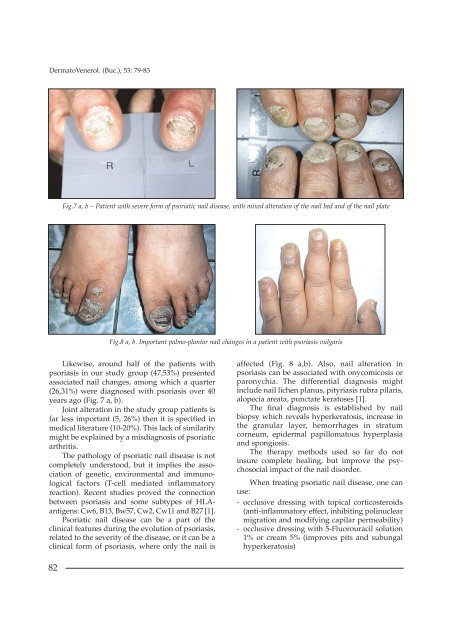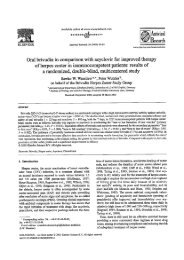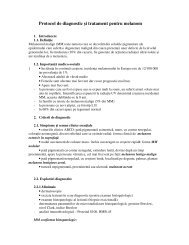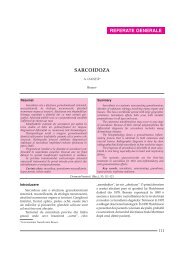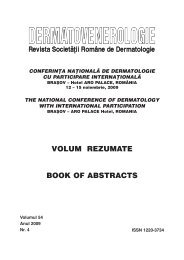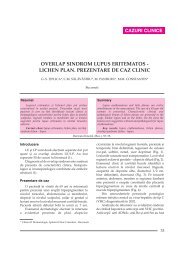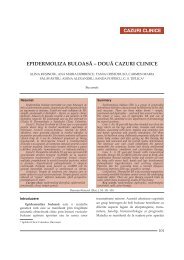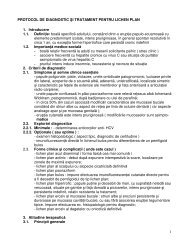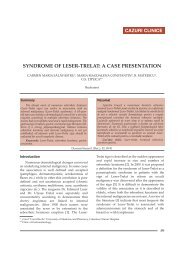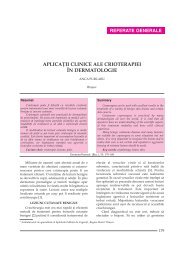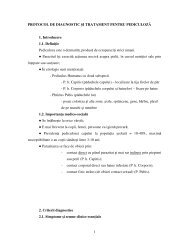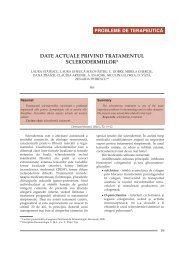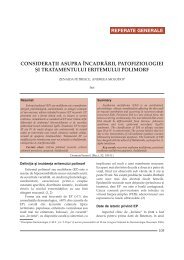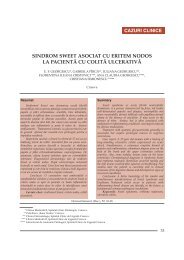PSORIASIS â THE RELATIONSHIP BETWEEN NAIL CHANGES ...
PSORIASIS â THE RELATIONSHIP BETWEEN NAIL CHANGES ...
PSORIASIS â THE RELATIONSHIP BETWEEN NAIL CHANGES ...
You also want an ePaper? Increase the reach of your titles
YUMPU automatically turns print PDFs into web optimized ePapers that Google loves.
DermatoVenerol. (Buc.), 53: 79-83Fig.7 a, b – Patient with severe form of psoriatic nail disease, with mixed alteration of the nail bed and of the nail plateFig.8 a, b. Important palmo-plantar nail changes in a patient with psoriasis vulgarisLikewise, around half of the patients withpsoriasis in our study group (47,53%) presentedassociated nail changes, among which a quarter(26,31%) were diagnosed with psoriasis over 40years ago (Fig. 7 a, b).Joint alteration in the study group patients isfar less important (5, 26%) then it is specified inmedical literature (10-20%). This lack of similaritymight be explained by a misdiagnosis of psoriaticarthritis.The pathology of psoriatic nail disease is notcompletely understood, but it implies the associationof genetic, environmental and immunologicalfactors (T-cell mediated inflammatoryreaction). Recent studies proved the connectionbetween psoriasis and some subtypes of HLAantigens:Cw6, B13, Bw57, Cw2, Cw11 and B27 [1].Psoriatic nail disease can be a part of theclinical features during the evolution of psoriasis,related to the severity of the disease, or it can be aclinical form of psoriasis, where only the nail isaffected (Fig. 8 a,b). Also, nail alteration inpsoriasis can be associated with onycomicosis orparonychia. The differential diagnosis mightinclude nail lichen planus, pityriasis rubra pilaris,alopecia areata, punctate keratoses [1].The final diagnosis is established by nailbiopsy which reveals hyperkeratosis, increase inthe granular layer, hemorrhages in stratumcorneum, epidermal papillomatous hyperplasiaand spongiosis.The therapy methods used so far do notinsure complete healing, but improve the psychosocialimpact of the nail disorder.When treating psoriatic nail disease, one canuse:- occlusive dressing with topical corticosteroids(anti-inflammatory effect, inhibiting polinuclearmigration and modifying capilar permeability)- occlusive dressing with 5-Fluorouracil solution1% or cream 5% (improves pits and subungalhyperkeratosis)82


